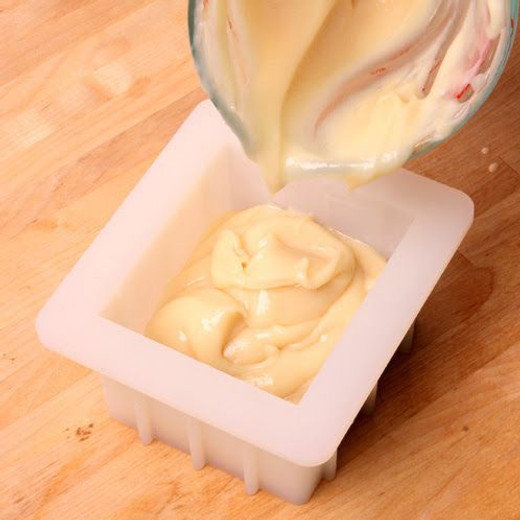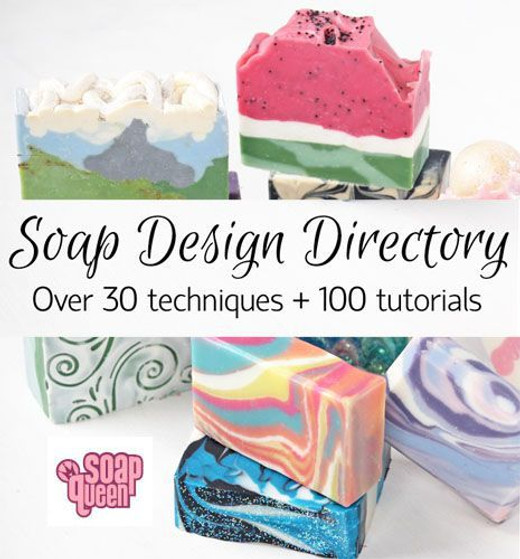This full blog post from Soap Queen deals directly with Bramble Berry fragrances, but also other fragrances, so we have a copy here as a handy reference. Have you heard the soapy expressions: seized, riced, separated, volcanoed, alien brain, super gel, super heat and never known what these soapy adventures actually look like? It really helps avoid ruined soap if you have some idea of what to expect and that is why Bramble Berry and Aussie Soap Supplies test all the fragrances and have notes on the listing.
Soap Behaving Badly
Update: Jan 2021 - an updated version video:
I started my soaping adventures when I was young (ah, sweet 16), and have learned that not everything turns out perfectly the first time. Sometimes despite your best efforts during a soaping session, you’ll get batches that just don’t quite turn out right. It’s just an inherent (and disappointing!) part of soaping. I’m a firm believer in ‘practice makes perfect,’ and being persistent in mastering your technique will help you achieve what you want in your soap, consistently. While there are hundreds of soaping variables that can cause problems, one huge factor that can determine the success of your soaping session is the fragrance or essential oil you use.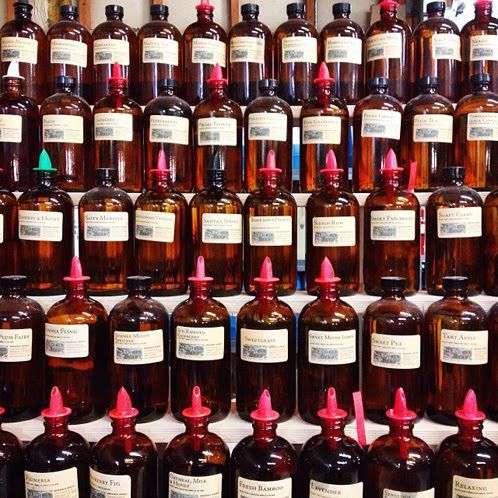
All Bramble Berry Fragrance and Essential oils go through a thorough testing process to ensure they perform well in cold process soap.
Bramble Berry carries hundreds of fragrance and essential oils, all of which are rigorously tested multiple times in cold process soap by our product development team. We regularly receive hundreds of fragrances from top perfumers throughout the year and some of them don’t behave as well as we’d like. The following collages are great examples of the various ways fragrance oils can misbehave — and how you can still salvage the soap! Every soaping experience is a learning experience =)
Note about testing: We tested all of these (non-Bramble Berry) fragrances in 1 pound batches using our Lots of Lather Quick Mix. Each batch contained .7 oz. of fragrance oil.
Exhibit A: Acceleration
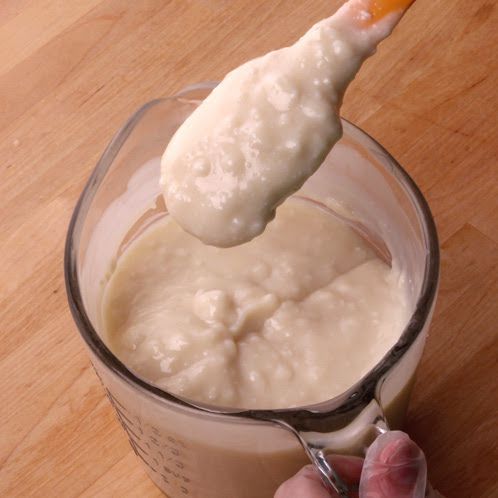
Up close & personal with ricing. This batch looks like tapioca pudding!
The work around: Often, ricing can be stick blended out. However, in utilizing the stick blender to smooth your soap out, you may end up with a much thicker trace than expected. Notice the photo in the bottom right-hand corner of the collage — the soap was as thick as pudding after we stick blended the rice granules out. We managed to spoon it into the mold and it retained a relatively smooth texture.
This soap is also a great example of the discoloration that can occur as a result of vanilla content in fragrance oil. It may look like a nice creamy white in the mold, but after hardening for a few days this soap turned chocolate-y brown. Scroll down for final photos.
Exhibit C: Separation, ricing and seizing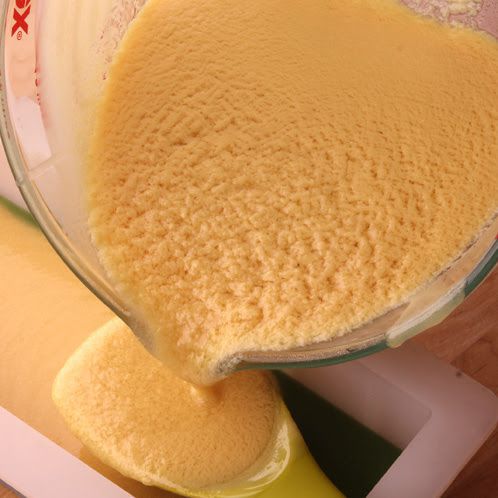
This is from a different batch of soap, but it shows a more intense example of separation. Notice the pockets of oil where the fragrance oil is pooling around the batter.
After we stick blended this batch, the batter started to seize. This is true seizing because the texture was beyond that of pudding like the other two; at this point it almost looked like gritty Play-Doh. Yuck!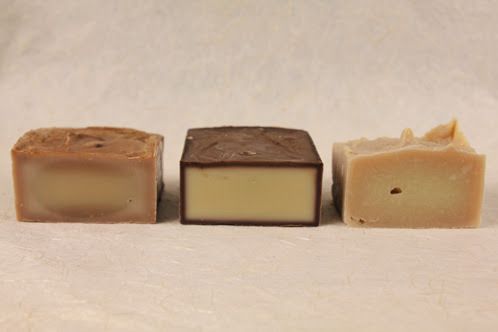
From left to right: Exhibit A, Exhibit B, Exhibit C
Just for fun, we cut into each soap. Exhibit A went through gel phase in the center (notice that dark, oval circle) as well as discoloration from vanilla content in the fragrance oil. Exhibit B went through textbook vanilla discoloration, showing the dark brown on the outside and creamy white in the center. Exhibit C was so thick when it was poured that there were bubbles throughout — notice the small hole where an air bubble was trapped.
Bonus bad soap behavior
Alien Brain: Not only do we get fragrances to test, we get various oils and butters too. This soap was made using pumpkin seed oil, and it caused a crazy phenomenon called Alien Brain. Alien brain happens when the soap overheats, which is clearly what happened here. Notice that the entire loaf is gelled throughout! The great thing about Alien Brain though is that it is a purely cosmetic issue, and does not affect the rest of the soap. With a little steaming to get rid of the soda ash, this soap would look great!
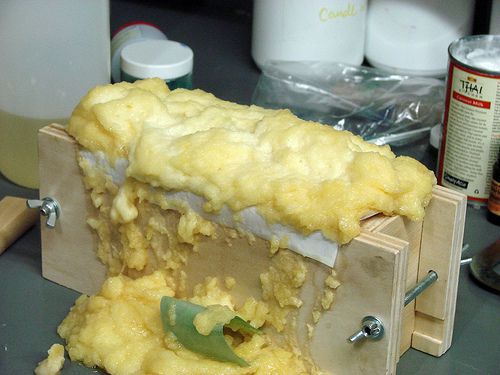
With this batch, with gloves on, you can scoop the soap back in as it starts to deflate. Or, Hot Process Hero the soap out when it’s fully cooled.
General tips for good soapy behavior
Although some fragrances will inevitably cause issues, there are a few things you can do to ensure you get well-behaved batter.
- First, make sure you are soaping at lower temperatures. We like to soap when the lye water and oils are about 120 degrees F. When soaping at hotter temperatures, you run the risk of accelerating trace, creating a heat tunnel or causing a soap volcano.
- Double check to be sure your recipe checks out with the lye calculator and that you are using the recommend amount of water. Water discounting can cause the batter to accelerate.
- Take the fragrance oil for the batch and mix it with an equal amount of liquid oil (you can pull it out of the regular recipe or just add extra superfatting oils) and heat the mixture up for 20 seconds in the microwave to bring the temperature of the fragrance up so it’s not quite as cold when the product is added to the soap batter.
- Whisk in fragrances and colorants after the batter reaches trace. Even the best recipes and fragrances will thicken up if you stick blend them too much.
- Using recipes with lots of soft oils, such as Olive, Sunflower or Rice Bran, tend to maintain a thinner trace longer.
The post Soap Behaving Badly appeared first on Soap Queen.
If you do experience a seized batch, here's SQ's video on how to rebatch, and there are more methods listed in our Learning Library on our website.


